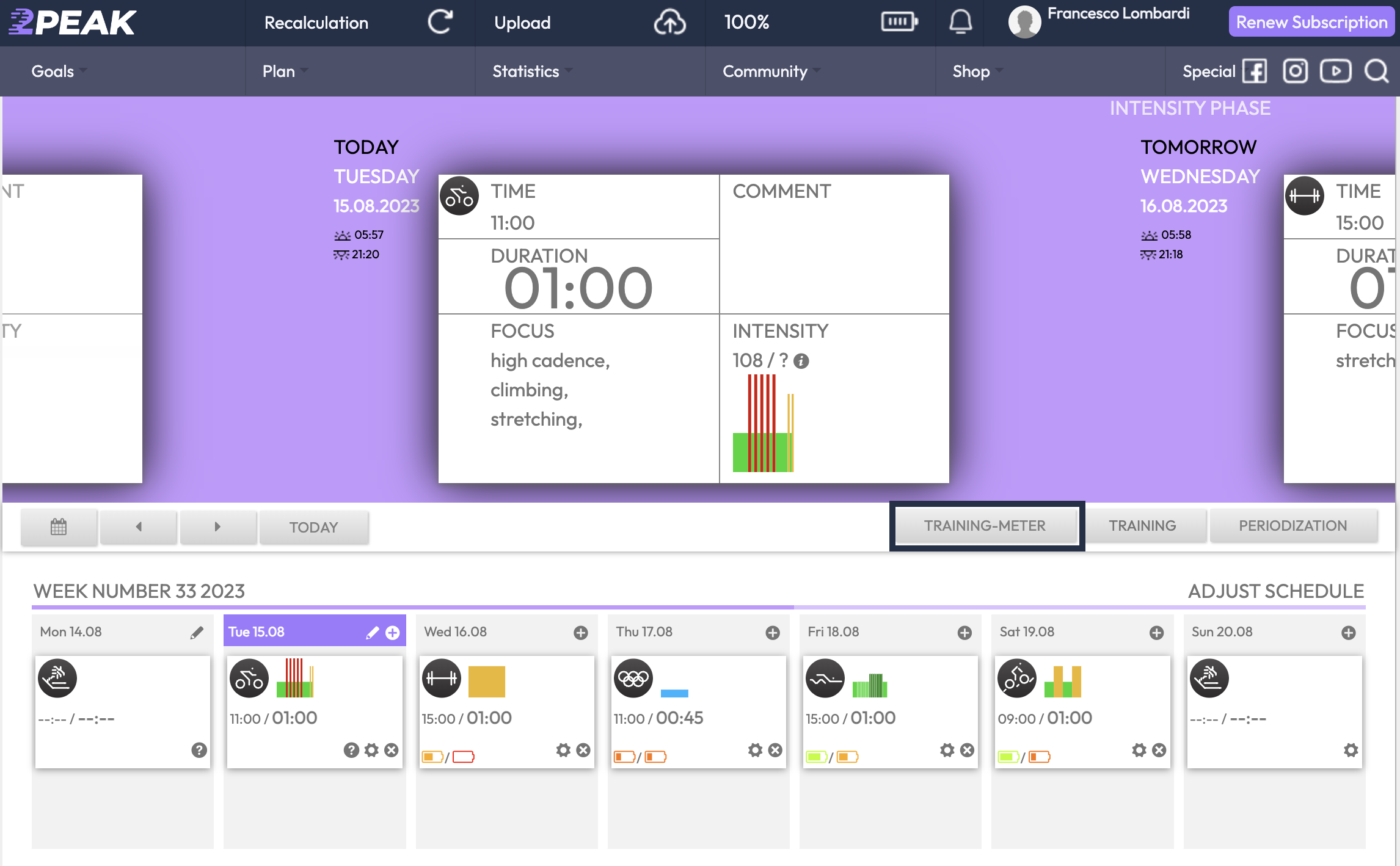Are you in line with your goal? Are you training specifically according to your plan? The Training Meter provides direct feedback on the quality of training, broken down into the three essential components of endurance performance: potential (VO2max), fatigue endurance and exploitation.

The number of documented workouts in the last 60 days is shown at the top. The more data you have, the more precise the information on the percentage of ‘dirty’ training, represented by the ‘Dirty Training Index’. Dirty’ training refers to workouts where the content is not clearly defined and intensities vary widely without having a true interval character. The value of the Dirty Training Index should be as low as possible and change gradually with more precise application of the training guidelines. In the beginning, the absolute value is not important. If you create a trend towards smaller values, you are moving in the right direction – that matters.

In the Training Target Meter we show in green how the training load should be distributed (not hours!) in relation to the next target (which is displayed at the top of the page). In yellow is superimposed the current state of the average of the last 60 days, based on the analysis of your documentation; both actual data and manually recorded workouts or intervals are taken into account. Accuracy is higher with real data.

Deficiencies in one of the 3 components may occur if the given training was not fully implemented or if, due to circumstances and/or settings, it was not possible to plan a sufficient number of corresponding training forms. Finally, one of the 3 components may have been trained more intensively. This leads to a RELATIVE weakening of the other two components.
In this sense, the analysis should not be seen as an indication of weakness, but rather as an aid to faster improvement.
The 3 components
VO2MAX :
Your potential is comparable to the size of your ‘engine’: Ferrari or Fiat? Today we know that this limit can always be moved upwards at any age.
In case of a deficit in potential, you should perform the next Z5 (power zone) and high Z4 (threshold zone) intervals in a disciplined manner and, if possible, perform one or more extra intervals. As long as they can be performed according to specifications.
EXPLOITATION :
How well are you exploiting your potential? A well tuned Fiat beats a poorly maintained Ferrari.
In case of a deficit in exploitation (or utilisation of potential): perform the next endurance training in a disciplined manner (no mixed forms in Z3 – upper endurance zone) and, if time permits, extend training in Z2(endurance zone) to devote more time to these areas.
RESISTANCE TO FATIGUE:
How long can you sustain high performance? How big is your fuel tank?
In case of a deficit in fatigue endurance, implement the next Z3 and Z4 intervals in a disciplined manner and, if possible, perform one or more extra intervals. Assuming you can perform them according to the target.
Any deviations are displayed more clearly with the target. If the deviation between TARGET and ACTUAL is particularly high, you have to intervene as a priority. All you have to do is to implement the training planned by 2PEAK more precisely. In this way you will get closer to your goal. If the main competition is still a long way off (more than three months), larger deviations are more tolerable than in the immediate preparation for the race.
- If you notice a large deviation in VO2max, you should focus more on the intervals in upper Z4 and Z5.
- Deviations in fatigue endurance indicate non-completion of sessions in Z4 and Z3.
- Exploitation refers to the training load in the middle or upper Z2 interval.
Click on ‘Details’ to see how the training load is distributed in the 8 differentiated training zones we use in the background and how much energy was ‘wasted’ in the unstructured (‘dirty’) training we call Zx. Multi-sport athletes will see this overview separated by discipline.
